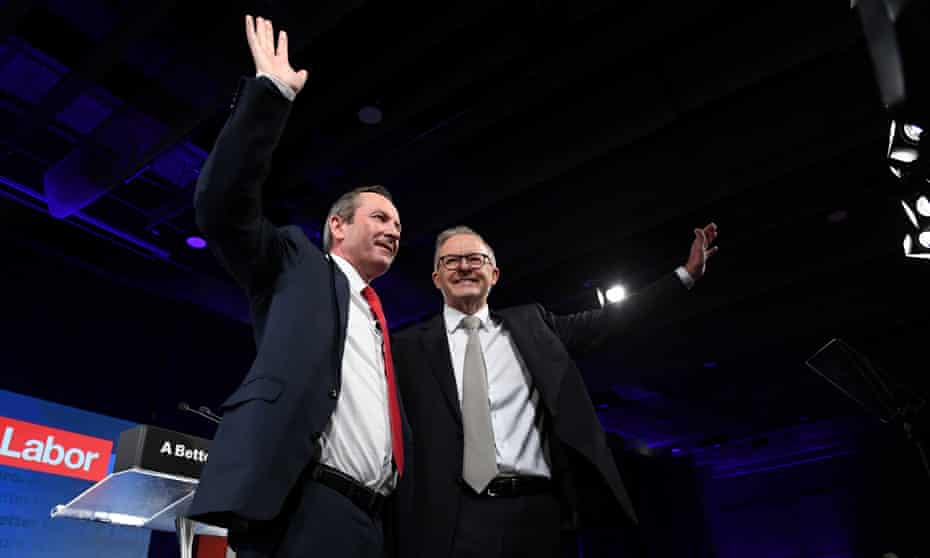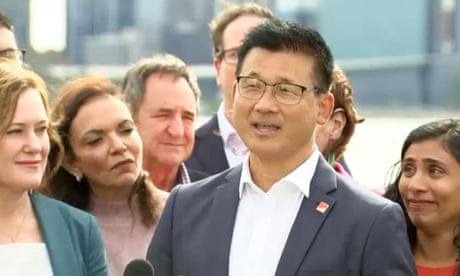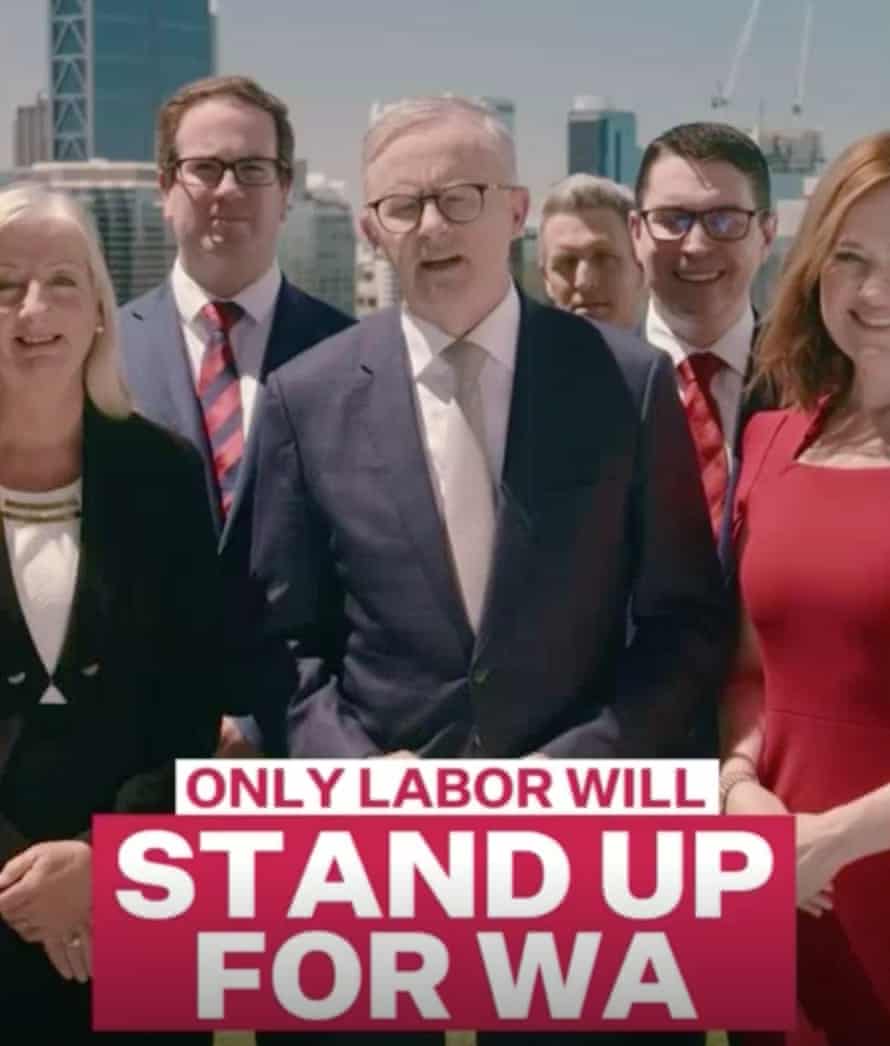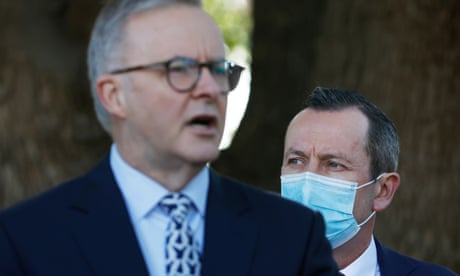Extract from The Guardian
The plan, hatched after the 2019 election rout, worked and now WA MPs want a larger presence in Anthony Albanese’s cabinet.

Wed 25 May 2022 03.30 AEST
Last modified on Wed 25 May 2022 07.54 AESTAlbanese has doubtless countenanced concrete options with his inner circle but the leader’s smoke signals have not yet wafted more widely.
Nature abhors a vacuum, so in the absence of definitive signals, Labor’s factional wheels are turning. The necessary lists are being prepared. There is speculation about who will be in and out, and the usual argy-bargy about whether or not the right faction will comply with affirmative action obligations.

And given Labor’s huge electoral success in the west, WA Labor absolutely wants its moment in the sun. West Australian MPs want a larger presence in the engine room of the new Albanese government. The Labor contingent from the west always wants that – but electoral success in 2022 gives that perennial aspiration just cause.
Albanese and key strategists agreed in-principle that a national campaign put together on the east coast did not resonate with voters in the west of the country. By 2020, WA Labor had a new state secretary – Tim Picton. Picton had worked in Canberra and for Jay Weatherill and Daniel Andrews before running Mark McGowan’s campaign in March 2021 – the state election that decimated the Liberals in WA.
A couple of months later, during a window where the state border opened in June, Picton travelled to Canberra. Without drawing attention to themselves and their objectives, the WA state secretary and Labor’s national secretary and federal campaign director, Paul Erickson, gave a detailed presentation to Labor’s Western Australian MPs about running a campaign-within-a-campaign in 2022.
The messages for Western Australia, crafted using WA-specific joint research, would be complementary to the messages being promulgated in the national campaign. But Picton would develop localised language, and run his own digital campaign. Erickson appointed a separate advertising agency for the WA campaign – the Moss Group. Campaign Edge did the national advertisements.

The WA ads had a very different look to the national campaign. They featured the state candidates walking together with Albanese across the bridge to the Optus stadium in Perth – which is where the Labor leader held his official campaign launch. Labor staged its official campaign in Perth for the first time since 1940 as part of Albanese’s objective of bagging three Liberal-held seats in the west. McGowan also featured prominently in the advertising, and, of course, at the campaign launch.
Back in mid-2021, Picton told colleagues in Canberra the right campaign – local, parochial, targeted – would “radicalise” voters in the west who were furious with Scott Morrison’s constant politicisation of the pandemic. During the Canberra presentation, Picton said McGowan and the state government would work as “agitators in chief” – championing WA causes in coordination with the central campaign.
Picton and Erickson felt with the right pitch, the 2022 campaign could displace conventional wisdom about Australian voters in more conservative-leaning states hedging their bets in the federation, wanting a Labor government at the state level and the Liberals in Canberra or vice versa. The pandemic, and Morrison’s critique of McGowan and Andrews in Victoria, handed Labor that opportunity.
A dedicated WA strategy group was formed in July and a bespoke message guide was produced. When shadow ministers visited WA, they would communicate using the agreed terminology – Labor would be “the partner WA needs for a better future”.
An Albanese government would bring back Australian manufacturing by “investing in high-tech manufacturing and downstream processing so we can make more here using WA resources”. It would invest in skills and training and take pressure off hospitals, while acting on cost of living pressures and protecting “WA’s GST” from the New South Wales Liberals.
The kicker was Clive Palmer. “And unlike Scott Morrison’s Liberals, we will never back Clive Palmer against WA.”

In terms of negative messaging, the guide prompted visitors from the east coast to remind WA voters Morrison had backed Palmer’s high court challenge to “tear down the border at the height of the pandemic”. Morrison had also characterised NSW’s pandemic response as “the gold standard” and he’d compared people in WA to “cave people” – a reference to when Morrison had compared people in the state to the movie The Croods.
A key feature of the national campaign was Labor’s decision to train the focus on Morrison and make the spine of the contest a referendum on the prime minister’s character and competency. But that messaging was particularly salient in WA given pent-up anger about the east coast disdain for McGowan’s pandemic management in the west.
Labor strategists were surprised when the Liberals didn’t respond in kind during the campaign with a bespoke strategy countering Labor’s pitch. Labor only logged one WA-specific advertisement centring on a contention that Labor would bring back a mining tax – but it came late in the contest and fell flat.
Labor had hoped to pick up three seats in WA on Saturday night but in the end the haul was four – Swan, Pearce, Hasluck and Tangney. The Erickson-Picton strategy had paid dividends.
The experiment has also created a new model for political campaigns in the future. What remains to be seen is whether or not MPs in the west can persuade Albanese it is time to shift the centre of gravity in the new Labor ministry westwards.
No comments:
Post a Comment